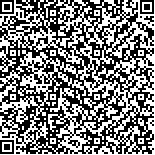| Quote
: |
葛芳芳,郭磊,彭欣,杨铭,徐蓉娟.基于复杂系统熵网络方法探析徐蓉娟治疗桥本甲状腺炎用药规律[J].湖南中医药大学学报英文版,2021,41(2):286-290.[Click to copy
] |
|
| |
|
|
| This paper
:Browser 2105times Download 651times |
| 基于复杂系统熵网络方法探析徐蓉娟治疗桥本甲状腺炎用药规律 |
| 葛芳芳,郭磊,彭欣,杨铭,徐蓉娟 |
| (上海中医药大学, 上海 201203;上海中医药大学附属龙华医院, 上海 200032) |
| 摘要: |
| 目的 运用复杂系统熵网络方法对徐蓉娟教授治疗桥本甲状腺炎的用药经验进行数据挖掘和分析。方法 收集2017年1月至2018年12月徐蓉娟教授辨证治疗桥本甲状腺炎患者的门诊资料和处方,借助Netdraw 2.0软件进行复杂网络构建及可视化,用于“基础方”的数据挖掘分析,采用MATLAB编程方法进行网络信息统计及分析,采用复杂系统熵网络方法挖掘核心药对。结果 共收集162个病例,提取处方1 704张,涉及中药239味,累计使用频次25 173。使用频次>500次者有灵芝、柴胡、黄芪、生甘草、白芍、生牡蛎、当归、郁金、陈皮、熟地黄、浙贝母、香附、白术、生地黄、党参、茯神、连翘。使用频率>70%的有灵芝、柴胡、黄芪。通过关联规则的分析,药对使用频次较高者为柴胡-郁金、生牡蛎-浙贝母、白芥子-浙贝母、太子参-麦冬、当归-生地黄。使用频率最高的药味为苦味,其余依次为甘味、辛味、咸味、酸味;使用频率最高的中药四气当属平性,其余依次为温性、寒性、微寒、微温。根据BK算法得到基本方5个,总结得出基本方药物组成:柴胡、黄芪、灵芝、白芍、当归、生地黄、生甘草、生牡蛎、熟地黄、浙贝母。结论 徐蓉娟教授治疗桥本甲状腺炎多基于肝郁脾虚、痰瘀互结证,治以疏肝健脾为主,佐以化痰祛瘀。核心药物为柴胡、灵芝、黄芪。 |
| 关键词: 桥本甲状腺炎 数据挖掘 用药规律 肝郁脾虚 痰瘀互结 |
| DOI:10.3969/j.issn.1674-070X.2021.02.023 |
| Received:August 23, 2020 |
| 基金项目:上海市名老中医学术经验研究工作室建设工程(SHGZS-2017016);上海中医药大学名医工作室项目(SZYMZYGZS4005);上海中医药大学科研项目(2014YSN32)。 |
|
| Analysis of Professor Xu Rongjuan's Medication Rule for Hashimoto's Thyroiditis Treatment Based on Complex Systems Entropy Network |
| GE Fangfang,GUO Lei,PENG Xin,YANG Ming,XU Rongjuan |
| (Shanghai University of Traditional Chinese Medicine, Shanghai 201203, China;Longhua Hospital of Shanghai University of Traditional Chinese Medicine, Shanghai 200032, China) |
| Abstract: |
| Objective To mine and analyze the data of professor Xu Rongjuan's experience in the treatment of Hashimoto's thyroiditis by using complex systems entropy network. Methods The outpatient data and prescriptions of professor Xu Rongjuan in the treatment of Hashimoto's thyroiditis based on syndrome differentiation were collected from January 2017 to December 2018. With the help of Netdraw 2.0 software, the complex network was constructed and visualized, which is used for data mining and analysis of "basic side". The MATLAB programming method was used for network information statistics and analysis, and the complex system entropy network method was used to mine the core drug pair. Results A total of 162 cases were collected, 1 704 prescriptions were extracted, 239 kinds of traditional Chinese medicine were involved with the cumulative use frequency of 25 173. The frequently used >500 times herbs were Lingzhi (Ganoderma), Chaihu (Bupleuri Radix), Huangqi (Astragali Radix), Shenggancao(Glycyrrhizae Radix Et Rhizoma), Baishao (Paeoniae Radix Alba), Shengmuli (Ostreae Concha), Danggui (Angelicae Sinensis Radix), Yujin (Curcumae Radix), Chenpi (Citri Reticulatae Pericarpium), Shudihuang (Rehmanniae Radix Praeparata), Zhebeimu (Fritillariae Thunbergii Bulbus), Xiangfu (Cyperi Rhizoma), Baizhu (Atractylodis Macrocephalae Rhizoma), Shengdihuang (Rehmanniae Radix), Dangshen (Codonopsis Radix), Fushen (Poria Cum Ligno Hospite), Lianqiao (Forsythiae Fructus). Among them, Lingzhi (Ganoderma), Chaihu (Bupleuri Radix), and Huangqi (Astragali Radix) were used in more than 70%. Through the analysis of association rules the drug pairs with high frequency were Chaihu (Bupleuri Radix)-Yujin (Curcumae Radix), Shengmuli (Ostreae Concha)-Zhebeimu (Fritillariae Thunbergii Bulbus), Baijiezi (Sinapis Semen)-Zhebeimu (Fritillariae Thunbergii Bulbus), Taizishen (Pseudostellariae Radix)-Maidong (Ophiopogonis Radix), Danggui (Angelicae Sinensis Radix)-Shengdihuang (Rehmanniae Radix Praeparata). The flavor of medicine with the highest frequency in use was bitter, and the rest were sweet, pungent, salty and sour; the four qi of the Chinese medicine with the highest frequency in use was calm, and the rest were warm, cold, slightly cold and slightly warm. According to BK algorithm, five basic formulas were obtained, and common basic formulas were analysed and summarized:Chaihu (Bupleuri Radix), Huangqi (Astragali Radix), Lingzhi (Ganoderma), Baishao (Paeoniae Radix Alba), Danggui (Angelicae Sinensis Radix), Shendihuang (Rehmanniae Radix), Shenggancao (Glycyrrhizae Radix Et Rhizoma), Shengmuli (Ostreae Concha), Shudihuang (Rehmanniae Radix Praeparata), Zhebeimu (Fritillariae Thunbergii Bulbus). Conclusion Professor Xu Rongjuan's treatment of Hashimoto's thyroiditis mainly starts from liver depression and spleen deficiency, phlegm and blood stasis binding together. The treatment is mainly to soothe the liver and strengthen the spleen, and to remove phlegm and blood stasis. The core drugs are Chaihu (Bupleuri Radix), Lingzhi (Ganoderma), Huangqi (Astragali Radix). |
| Key words: Hashimoto's thyroiditis data mining medication rule liver depression and spleen deficiency phlegm and blood stasis binding together |
|

二维码(扫一下试试看!) |
|
|
|
|


